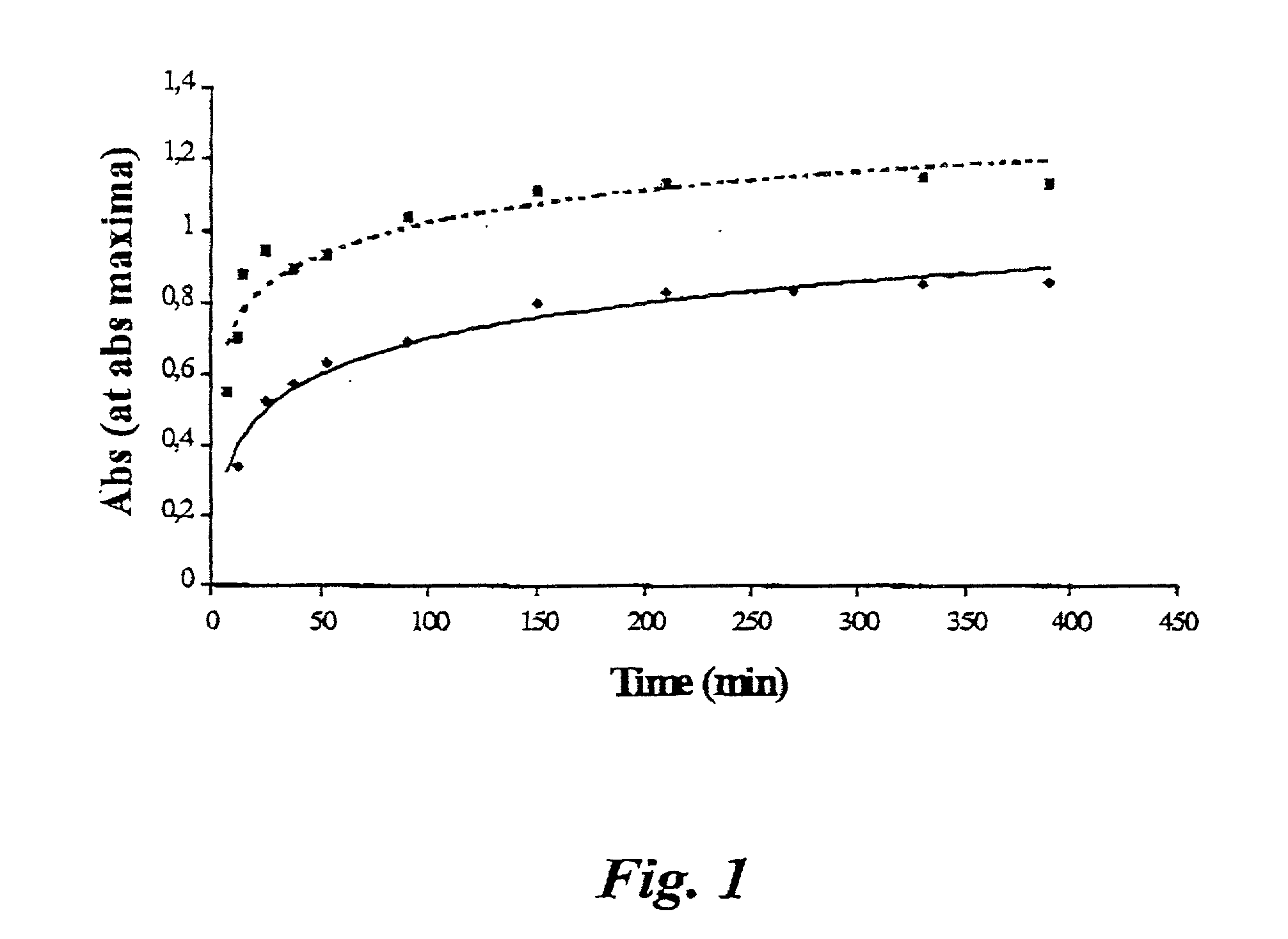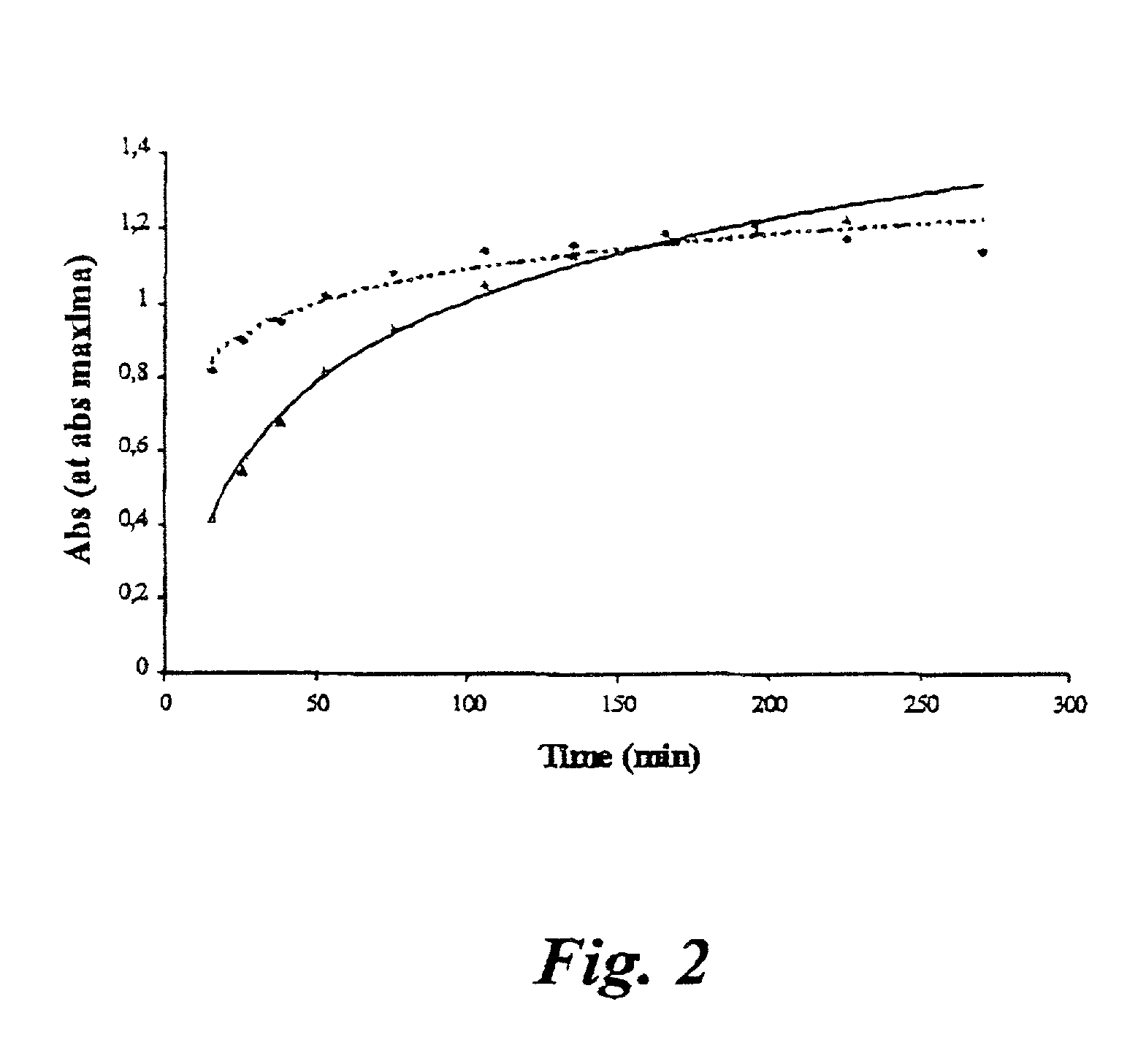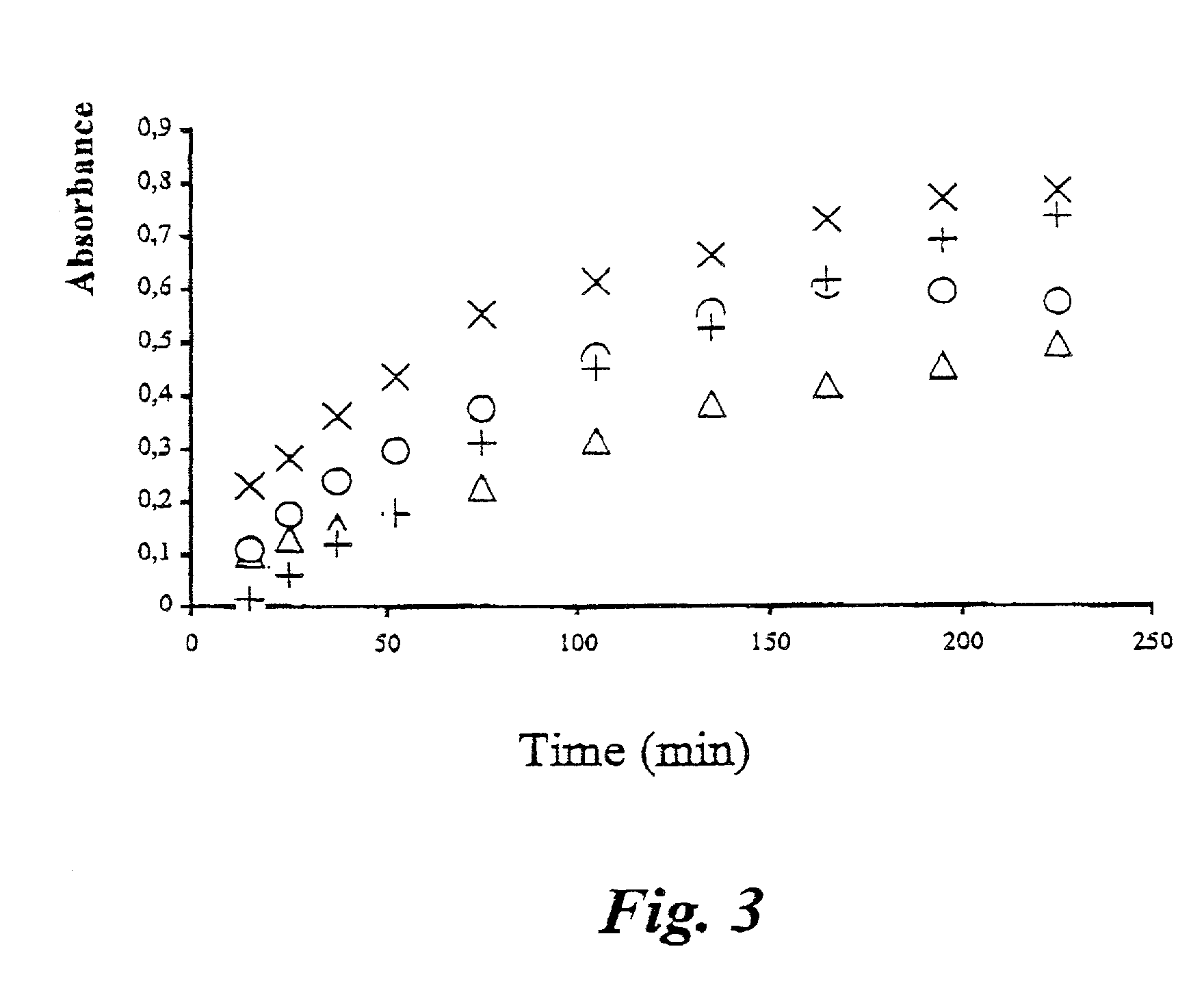Method for the prediction of starch digestion
a technology of starch and digestion, applied in the field of method for predicting starch digestion, can solve the problems of poor repeatability, less than satisfactory accuracy, and failure to put forward a fully satisfactory, accurate and useful method
- Summary
- Abstract
- Description
- Claims
- Application Information
AI Technical Summary
Problems solved by technology
Method used
Image
Examples
example 1
An Analysis Spanning 4 Hours
[0035] A reagent was prepared by dissolving 3,5-dinitro salicylate (2.00 g, Aldrich) in aqueous NaOH (70 ml, 1 M). Optionally, the mixture is heated in order to expedite the formation of a clear solution. Upon cooling, water is added to 100 ml. The reagent solution is stored in a dark place and filtered through a 0.45 .mu.m filter before use, in order to remove possible precipitates. The reagent solution was added in equal amounts (2 ml) in test tubes marked "control", "zero" "5 min" "10 min" "20 min" "30 min" "45 min" "1 h" "1.5 h" "2 h" "2.5 h" 3 h", "3.5 h", and "4 h". The test tubes were placed in an ice bath awaiting the analysis.
[0036] A buffer solution (pH 6.6) was made by mixing KH.sub.2PO.sub.4 (250.0 ml, 0.20 M, Sigma) and NaOH (89.0 ml, 0.20 M) and adding water to a total volume of, 1000 ml. NaCl (0.58 g, Riedel-de Han) was then added to produce a chloride concentration of 0.01 M.
[0037] According to an embodiment of the present invention, the e...
example 2
An Analysis Based on Two Measurements
[0040] The procedure of Example 1 was repeated with the following modifications:
[0041] The reagent solution was added in equal amounts (2 ml) in test tubes marked "0 min", "0 min blank", "90 min", and "90 min blank". The test tubes were placed in an ice bath awaiting the analysis.
[0042] For the 0 min sample, a sample was taken from the buffer medium in the digestion bath. The sample was filtered and reacted with reagent as above. The blank sample was taken before addition of the starch sample.
[0043] Both samples and control were diluted by adding 8.7 ml water to 300.about..1 sample. The "90 min blank" sample is used as background for the slower degradation of the native starch granules. This series of samples is diluted in the same manner as the "0 min" and the "0 min blank" samples, i.e. 8.7 ml water is added to 300 .mu.l sample.
[0044] Optionally, also the "control" and the "zero" readings can be used for determination of the background and / or t...
PUM
 Login to View More
Login to View More Abstract
Description
Claims
Application Information
 Login to View More
Login to View More - R&D
- Intellectual Property
- Life Sciences
- Materials
- Tech Scout
- Unparalleled Data Quality
- Higher Quality Content
- 60% Fewer Hallucinations
Browse by: Latest US Patents, China's latest patents, Technical Efficacy Thesaurus, Application Domain, Technology Topic, Popular Technical Reports.
© 2025 PatSnap. All rights reserved.Legal|Privacy policy|Modern Slavery Act Transparency Statement|Sitemap|About US| Contact US: help@patsnap.com



